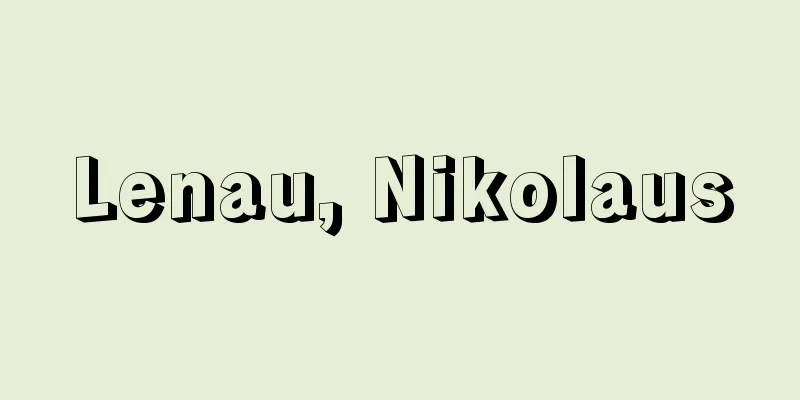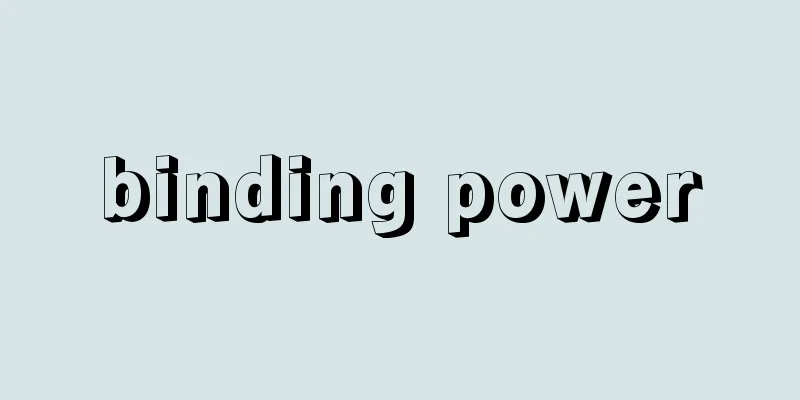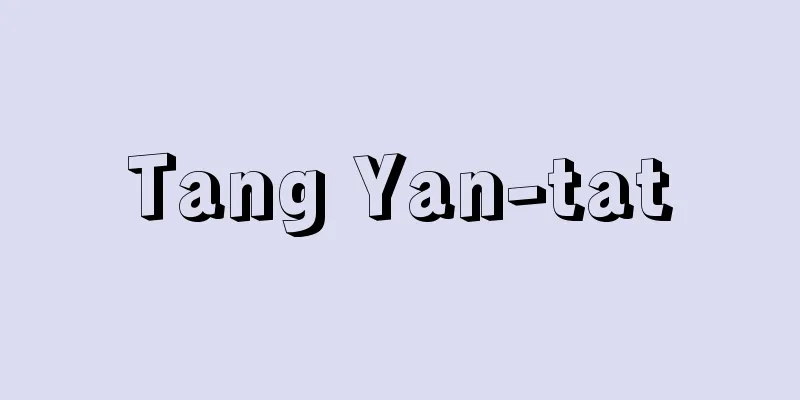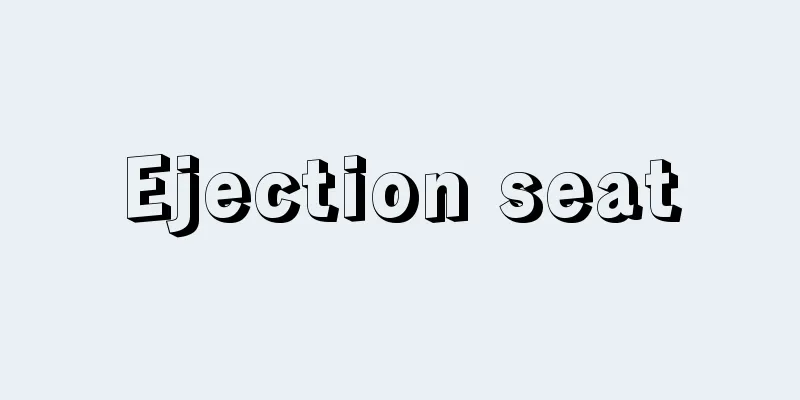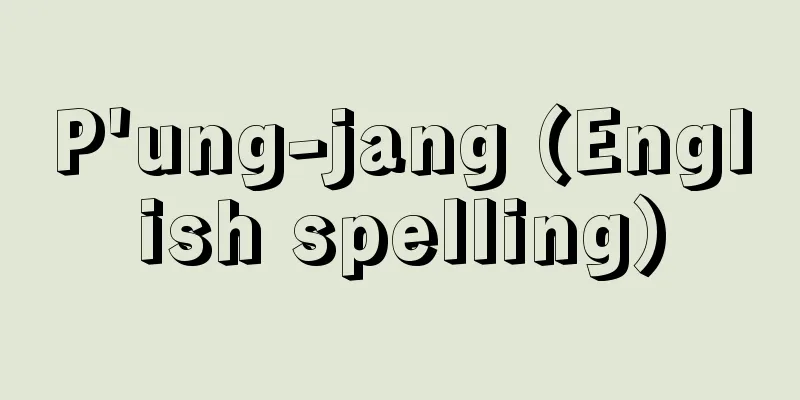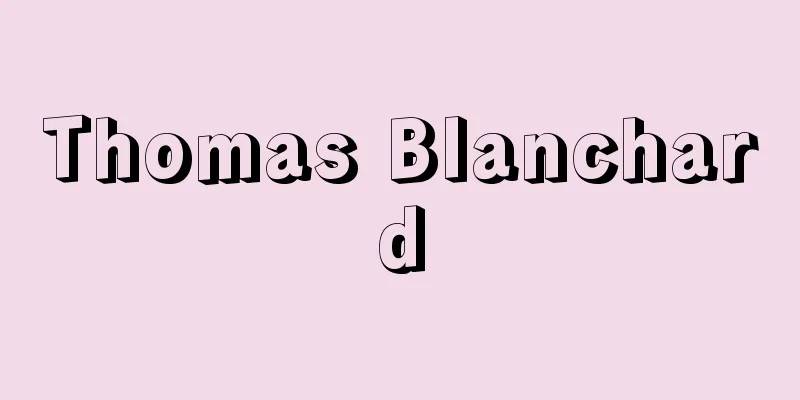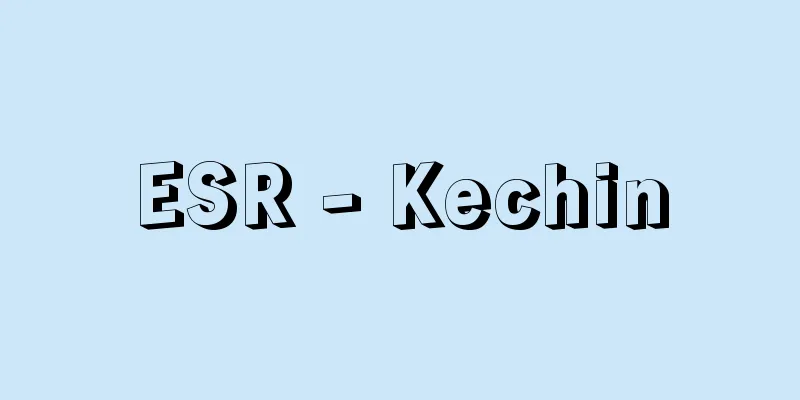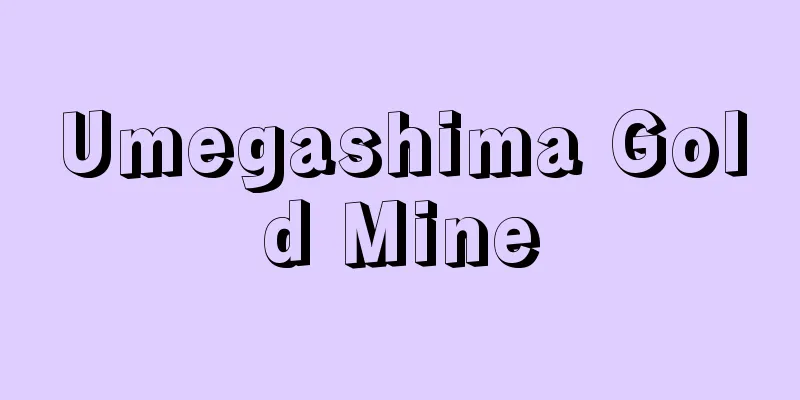Latvia - Latvia (English spelling)
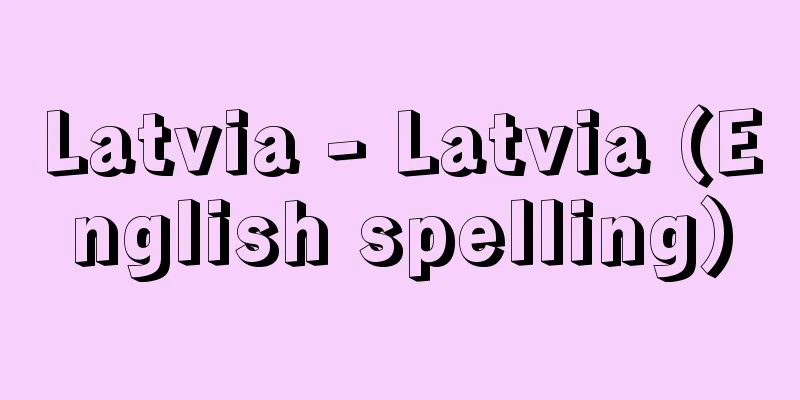
|
An independent country in northeastern Europe, facing the Baltic Sea. Latvia achieved independence in 1920, but was incorporated into the former Soviet Union in 1940 under a secret agreement between Germany and the Soviet Union, and spent half a century as a republic. In August 1991, it declared its withdrawal from the Soviet Union, and in September it became a fully sovereign state again, and joined the United Nations. It borders the Baltic Sea to the west, Estonia to the north, Russia to the east, and Lithuania and Belarus to the south. The current official name of the country is the Republic of Latvia, Latvijas Republika, with an area of 64,600 square kilometers and a population of 2,375,339 (2000). The population density is 37 people per square kilometer. The capital is Riga (population 760,000). [Shigeru Yamamoto] NatureLocated on the East European Plain, most of the country is flat, glacial lowland below 300 meters above sea level. It is in a transition zone from a marine to a continental climate, with relatively mild average temperatures of -7 to -2°C in January and 16 to 18°C in July. The annual precipitation is 550 to 800 mm. The Western Dvina (Daugava) River, which flows into the Gulf of Riga from the southeast near Riga, as well as the Lielupe River, Venta River, and Gauja River, all flow into the Baltic Sea. There are many lakes of glacial origin, with 3,195 lakes with a water surface area of more than 1 hectare. The forest area is 2.4 million hectares (38%), and the soil is mainly podzol. [Shigeru Yamamoto] historyLatvians can be traced back to the Baltic-speaking tribes of the Eastern Baltic region, which belong to the Indo-European language family. These tribes were not yet a single ethnic group at the end of the 12th century when the Teutonic Knights invaded the southeastern Baltic region as part of the Northern Crusades, making it easy for the Teutonic Knights, also known as the Knights of the Sword, to invade the southeastern Baltic region. In addition, missionaries to spread Christianity and German merchants seeking to expand trade followed. In 1198, the Germans moved northeast and southwest from Riga, at the mouth of the Daugava (Western Dvina), as their base. The area they conquered was called the Livonian Order (present-day southern Estonia and present-day northern Latvia), and feudalism developed under German landowners of knight origin. As Baltic German landowning aristocrats, they promoted political decentralization and maintained their influence until the 20th century. The main cities also developed as Hanseatic cities, and even after the decline of the Hanseatic League at the end of the 15th century, German merchants continued to prosper monopolistically. The eastern Baltic tribes conquered by the Baltic Germans became Christianized peasants. Conversions during the Reformation made the existence of the Livonian Order meaningless, and the order was dissolved in the struggle for supremacy over the Baltic Sea in the 16th century. Russia, Poland, and Sweden joined the struggle for supremacy over the Baltic Sea, and as a result of the Livonian War (1558-83), Kurzeme (Kurland) and Latgale (Latgalen) came under Polish control, and Bidzeme (South Librand) came under Swedish control. In 1721, Bidzeme came under Russian control under the Treaty of Nystad after the Northern War. Kurzeme and Latgale, which had become Polish territory, also came under Russian control after the partitions of Poland at the end of the 18th century, but the Baltic Germans maintained their status as landowning aristocrats. Serfdom was abolished in Kurzeme in 1817 and in Bidzeme in 1819. In 1865, the governors of the Baltic provinces were replaced by Russians, replacing the Baltic Germans, and in the late 1860s, the Baltic provinces were renamed the Baltic provinces. In 1885, Russian replaced German as the official language. The seeds of nationalism were already visible in the mid-18th century. Thanks to the stay in Riga of JG Herder, who advocated the existence and importance of national culture, the enlightened writings of his friend, Pastor G. Merkel, and the Moravian Brethren's campaign to promote compulsory education, the literacy rate at the end of the 19th century was high at over 70%. The Emancipation of the Serfs, which came with the obligation to establish primary schools, and the influence of the nationalist movement that was spreading throughout Eastern Europe were also important. The nationalist movement began with cultural activities such as collecting folk tales and songs, literaryization of the language, and the creation of a national epic. In the 1860s, Latvian newspapers were published in St. Petersburg, and in the 1880s, the word "Latvija" was created to refer to an area inhabited by peasants who spoke the same language. In 1888, A. Pumpurs (1841-1902), a military surgeon in the Russian Empire, wrote the national epic poem "Ratsipreis" (The Bear-reparter), which describes the resistance of the Latvians to the German invasion in the 13th century. However, the Russification policy, which became increasingly severe after the 1860s, hindered the political development of nationalism. In the 1890s, a movement called "New Thought" appeared, which was different from previous nationalist movements and in which socialists also played a part. Also in the second half of the 19th century, with the development of transport and industry and a rapid increase in the working population in cities, Riga's population increased fivefold between 1862 and 1913, and the proportion of Latvians in the population increased from 23.6% to 39.5%. This ethnic awakening led to hostility towards the Baltic Germans, and the 1905 revolution in St. Petersburg triggered strikes, burnings and destruction in Latvian-inhabited areas. More than 300,000 people were involved, and many of the activists were executed or forced into exile. After the revolution, the Russian government strengthened its repressive policies towards the Baltic provinces, and Latvian national consciousness and socialist movements went underground, but World War I brought them to the surface again. When the German army occupied Kurzeme in the autumn of 1915, the Latvian Rifle Corps was formed, made up of volunteers for the homeland defense, but the organization of such an ethnically-composed military force was rare, even within the Russian Empire. However, the Russian Revolution of 1917 split Latvians into socialist and nationalist groups, and despite the overwhelming dominance of the Bolsheviks, the nationalists declared independence on 18 November 1918, and Karlis Ulmanis led a provisional government. The provisional government was plagued by the presence of German troops and the Provisional Latvian Soviet government led by Latvian Bolshevik Peteris Stucka. The Ulmanis government, once driven out by the Bolsheviks, recaptured Riga with the Germans, but in 1919 a pro-German government led by Andrievs Niedra, supported by German commander Rudiger von der Goltz, was established. The Ulmanis government came under the protection of the British fleet, but with the cooperation of the Estonian army and pressure from the Allied forces, they forced General Goltz's German forces to withdraw by the end of 1919, and the Bolshevik forces to withdraw by the spring of 1920, and signed a peace treaty with the Soviets in April. What marked this independence was that the Ulmanis government's domestic support base was weak, and that the Allies supported it as a buffer zone against the westward advance of Bolshevism. As a nation-state with parliamentary democracy, the Republic of Latvia embarked on various domestic reforms, including agricultural reform, and in 1922 a constitution (Satversme) was enacted. Representatives of the German, Russian, Jewish, and Polish minority groups were sent to the Latvian parliament (Saeimas), resulting in a multi-party state. In addition to these many political and economic factors of instability within the country, the country was also hit by the effects of the economic crisis caused by the Great Depression. In May 1934, Ulmanis staged a coup with the support of the national army, established a dictatorial regime, and aimed to create a "Latvia with strong Latvians." In the 1930s, due to the unstable international environment, the country concluded the "Baltic Entente" with Estonia and Lithuania in 1934. However, the secret protocol attached to the German-Soviet Non-Aggression Pact concluded in 1939 between the Soviet Union and Nazi Germany promised that Latvia, along with Estonia, would be placed in the Soviet sphere, and Latvia was forced to sign a mutual assistance treaty with the Soviet Union in October 1940. In 1940, a new parliament was elected under Soviet occupation, and a resolution was passed to join the Soviet Union, which was approved by the Supreme Soviet in August. As a result, many people, including the leaders of the independence era, were deported and sent to Siberia. When the German-Soviet War began in June 1941, Latvia came under Nazi German occupation. When the Soviet army began to retake the region from 1944 to 1945, many people fled to Germany and Sweden, and then to the United States, Canada, Australia, and other countries. With the reoccupation of the Soviet army, Latvia became a constituent republic of the Soviet Union and an administrative unit of a centralized state. Partisan activities by Latvians that had been established under German occupation continued until the 1950s as guerrilla activities of the "Forest Brothers", but many were deported to Siberia due to the promotion of harsh Sovietization, including agricultural collectivization. After the Second World War, the country was placed under the direct control of the Soviet central government by Communist Party members who had returned from the Soviet Union. Many Russian workers flowed into Latvia to rebuild the country after the population had drastically decreased due to forced deportations and exiles, and the land had been devastated by the war. Furthermore, the promotion of all-Soviet enterprises and industrialization created a relationship of dependency with other republics in the Soviet Union, and in addition to the Sovietization of industry and the increase in the proportion of Russians in the population, the Sovietization of culture was also promoted. A reform movement arose in 1958 after Stalin's death, but the following year there was a great purge, and from the early 1960s onwards, strict centralized control was once again established. Resistance to this continued as underground activities and human rights movements, and became active by the end of the 1970s. In the 1970s, the economic stagnation in Latvia also widened the gap between the party's slogans and the actual social and economic situation, and criticism arose within the party. Due to the influx of Russians, the Latvian population in Riga fell from 44.6% in 1959 to 36.5% in 1989, with 52% of the total population being Latvian and 34% being Russian. [Shima Sonoko] PoliticsThe Perestroika (reforms) implemented by Gorbachev in 1986 was the catalyst for the start of the environmental protection movement in the country. After a debate against the expansion of the Davgavpils hydroelectric power plant, which began in October 1986, succeeded in halting the construction, this led to protests against the pollution of the Baltic Sea and a movement against the construction of the Riga subway. In 1987, the movement began to hold calendar demonstrations on the anniversary of the signing of the German-Soviet Non-Aggression Pact, the anniversary of the mass exiles to Siberia, and Independence Day, and by 1988 it had grown in scale. The movement was called the "Singing Revolution" because people sang old songs that had previously been banned at rallies and demonstrations. Reformists took the republics' leadership, and calls for reform and democratization were expressed in solidarity with Estonia and Lithuania as the Popular Front (Tautas fronte), a movement that supported Gorbachev's reforms. Founded in 1988, the Popular Front initially aimed for independence within the Soviet Union, but in 1989 it made it clear that it aimed for independence. The Popular Front faction won a landslide victory in the elections to the Latvian Supreme Council held on March 18, 1990, and the newly elected Latvian Supreme Council, following in the footsteps of Lithuania and Estonia, declared that it would begin the process of independence in May. Since the Popular Front, the three Baltic republics have remained united, and have pursued a policy of separatism and anti-Sovietism, but Gorbachev has attempted to divide the three republics, and independence negotiations have run into a deadlock. It came to the surface with the "Bloody Sunday" incident in January 1991, but the impasse was resolved with the failure of a conservative coup in Moscow in August 1991. In September, the State Council of the Soviet Union formally recognized independence. On June 5, 1993, the first parliamentary elections since regaining independence were held and the Seima (parliament) was established, finally breaking away from the Soviet-era system. Negotiations over the withdrawal of Russian troops were protracted due to concerns over the protection of the human rights of the Russian-speaking residents of the country, but the withdrawal was completed in August 1994, and the demolition of the Skrunda radar station, which had been postponed at that time, was also completed in 1999. The issue of Russian-speaking residents made it difficult to pass the nationality law, and provisions for naturalization application procedures were enacted in 1994, and the following year, in 1995, a law on former Soviet nationals was enacted. [Shima Sonoko] DiplomacyRegional cooperation with Estonia and Lithuania, which had been shown during the process of democratization, independence, and separatist movements, has basically continued even after the restoration of independence, but differences in domestic issues and economic development have become greater. The basic principle of foreign policy after the restoration of independence has been a return to Europe, and membership in the EU (European Union) and NATO (North Atlantic Treaty Organization) is considered the most important for the country's security. In February 1994, Latvia signed the "Partnership for Peace" document with NATO, and in June, it signed a free trade agreement with the EU, and in June 1995, it signed an associate membership agreement with the EU. In February 2000, Latvia was added as a target country for EU accession negotiations, and at the Baltic States Presidential Meeting in March of the same year, cooperation toward NATO and EU membership was confirmed. Later, at the NATO and EU summit held in 2002, it was decided that the Baltic States would join both NATO and the EU in 2004, and they joined NATO in March 2004 and the EU in May of the same year. [Shima Sonoko] Economy and IndustryWithin the Soviet Union, Latvia was characterized by developed industry and intensive mechanized agriculture, and was a region with a relatively high standard of living. During the Soviet era, a regional division of labor system was adopted under centralized economic management, and the industrial structure was focused on developing and strengthening heavy industry and food processing. Electrical and electronics industries, chemical industries, railway cars, food machinery, chemical fibers, paper, meat, dairy products, etc. were exported to other regions. After the collapse of the Soviet Union, stable supplies of energy and industrial raw materials from the federation ceased, and industrial production dropped sharply as the country lost its vast product market, with unemployment reaching the 20% range in 1993. As economic turmoil continued and inflation rose, the country introduced its own currency, the Lato. As of 2000, the country's main trading partners are Germany, the UK, Russia, Sweden, and Lithuania, and its main exports are timber and timber products, textiles, metals, and metal products, while its imports are machine tools, electrical machinery, minerals, and chemical products. Livestock and dairy farming are thriving in agriculture, and crops grown include barley, rye, and oats, as well as potatoes, vegetables, and flax. In the agricultural areas around Riga, vegetables for the city and sugar beets for animal feed are grown, and intensive livestock farming is well developed. [Shigeru Yamamoto] residentsThe national language of Latvia is Latvian, one of the Baltic languages belonging to the Indo-European language family, but after the long Soviet era, two-thirds of Latvians speak Russian, and the Russian language is widely used. In terms of ethnic composition, Latvians make up a slight majority at 57.6%, followed by Russians (29.6%) and Belarusians (4.1%). During the Soviet era, Russification progressed, and the proportion of Russians increased. The largest city is the capital, Riga, but there are also other cities in the southeast, such as the ancient capital of Daugavpils, the port city of Liepaja on the Baltic Sea, and the summer resort city of Jurmala. The urban population is high (72.8%, 1995), and there is a tendency for the population to be concentrated in the capital, Riga. [Shigeru Yamamoto] Hiromi Komori and Shinya Hashimoto, "History and Present of the Baltic States" (2002, Toyo Shoten) [References] | | | | | | | | | | | [Additional information] |"> Latvian flag ©Shogakukan Illustration/Shogakukan Creative "> Latvia location map Source: Shogakukan Encyclopedia Nipponica About Encyclopedia Nipponica Information | Legend |
|
ヨーロッパ北東部、バルト海に臨む独立国。ラトビアは1920年独立を達成したが、独ソ間の密約で1940年に旧ソ連に編入され、その一共和国として半世紀の時を刻んだ。1991年8月ソ連から離脱を宣言し、9月、ふたたび完全な主権国家となると同時に、国連に加盟した。西はバルト海に、北をエストニアに、東をロシア、南はリトアニアとべラルーシに接している。現在の正式国名はラトビア共和国Latvijas Republikaで、面積6万4600平方キロメートル、人口237万5339(2000)。人口密度は1平方キロメートル当り37人。首都はリガ(人口76万)。 [山本 茂] 自然東ヨーロッパ平野にあり、国土の大部分が標高300メートル以下の平坦(へいたん)な氷河性の低地である。海洋性気候から大陸性気候への漸移帯にあり、平均気温は1月零下7~零下2℃、7月16~18℃と比較的温和である。年降水量は550~800ミリメートル。リガ近くで南東からリガ湾に注ぐ西ドビナ(ダウガーバ)川をはじめ、リエルペ川、ベンタ川、ガウヤ川がバルト海に流入する。氷河起源の湖沼が多く、1ヘクタール以上の面積の水面をもつ湖沼だけで3195を数える。森林面積は240万ヘクタール(38%)、土壌はポドゾル土が多い。 [山本 茂] 歴史ラトビア人はインド・ヨーロッパ語族に属するバルト語系東バルトの諸部族にさかのぼれる。これら諸部族は、ドイツ騎士団が北方十字軍としてバルト海東南岸地域に侵出してきた12世紀末は、いまだ、単一の民族的集合体ではなく、そのため帯剣騎士団とよばれるドイツ騎士団のバルト海東南岸地域への侵出は容易に進められた。さらにキリスト教布教のための伝道師と交易の拡大を求めたドイツ人商人も続いた。 ドイツ人は1198年にダウガーバ(西ドビナ)河口のリガを拠点に北東や南西へと進出、ドイツ人により征服された地域は、リボニア騎士団領(現エストニア南部と現ラトビア北部)とよばれ、騎士出身のドイツ人地主による封建制が発展した。彼らはバルト・ドイツ人地主貴族として政治的分権化を促し、20世紀に至るまでその影響力をもった。また、主要都市はハンザ都市として発展したが、15世紀末のハンザ同盟衰微後も、ドイツ人商人は独占的な繁栄を続けた。 バルト・ドイツ人によって征服された東バルト諸部族は、キリスト教化された農民となった。宗教改革による改宗は、リボニア騎士団領の存在意義を失わせ、16世紀のバルト海の覇権争いで騎士団領は解体した。バルト海の覇権争いに加わったのはロシア、ポーランド、スウェーデンで、リボニア戦争(1558~83)の結果、クルゼメ(クルランド)、ラトガレ(ラトガレン)はポーランド支配下に、ビドゼメ(南リブランド)はスウェーデン支配下となった。1721年、北方戦争後のニスタット条約で、ビドゼメはロシア支配下に移った。ポーランド領となったクルゼメ、ラトガレも、18世紀末のポーランド分割によってロシア支配下に移ったが、バルト・ドイツ人は地主貴族としての地位を維持した。 クルゼメでは1817年に、ビドゼメでは1819年に農奴制が廃止された。1865年には、バルト海諸県の総督がこれまでのバルト・ドイツ人からロシア人に置き換えられ、1860年代末には、バルト海諸県から沿バルト諸県へと呼称も変えられた。公用語のドイツ語がロシア語にかわるのは1885年である。 民族主義の萌芽(ほうが)は18世紀なかばにすでにみられた。民族文化の存在とその重要性を主唱したヘルダーJ. G. Herderのリガ滞在、その友人である牧師メルケルG. Merkelの啓蒙(けいもう)的書物、モラビア兄弟会による義務教育の普及運動があり、19世紀末の識字率は7割以上という高さを示した。農奴解放令とともに初等学校の設立義務、東ヨーロッパに広がっていた民族主義運動の影響も重要である。 民族主義の運動は、民話・民謡の収集、言語の文語化、民族的叙事詩の創作など文化的なものから始まった。1860年代になると、サンクト・ペテルブルグでのラトビア語新聞の発行、1880年代には、同一言語の農民が住む地域をさす「ラトビアLatvija」ということばが生み出された。ロシア帝国軍医プンプルスA. Pumpurs(1841―1902)は1888年に13世紀のドイツ人の侵略に対するラトビア人の抵抗を描いた民族的叙事詩『ラーツィプレイシス(熊(くま)を裂く人)』を描いた。しかし、1860年代以降厳しさを増したロシア化政策は、民族主義の政治的な発展を妨げた。1890年代になると、これまでの民族主義運動とは異なり、社会主義者もその一端を担った「新思潮」とよばれる運動も現れた。 同じく19世紀後半には、交通機関や産業の発展、都市での労働者人口が急増し、リガは1862年から1913年までに人口は5倍に、ラトビア人の人口比も23.6%から39.5%に増えている。 このような民族の覚醒(かくせい)はバルト・ドイツ人への敵対心を導き出し、1905年サンクト・ペテルブルグでの革命を引き金に、ラトビア人居住地域でもストライキや焼き討ち、打ち壊しが起こった。これにかかわったものは30万人を超え、活動家の多くは処刑または亡命することとなった。ロシア帝国政府は革命後、沿バルト諸県への抑圧政策を強化し、ラトビア人の民族意識や社会主義運動は水面下にもぐったが、これをふたたび表出させたのが第一次世界大戦である。ドイツ軍が1915年秋にクルゼメを占領下におくと、郷土防衛の義勇兵からなるラトビア人ライフル団が設立されたが、このような民族編成の軍隊が組織されたのは、ロシア帝国内でも珍しいことであった。 しかし、1917年のロシア革命は、ラトビア人を社会主義者グループと民族主義者グループとに分裂させ、ボリシェビキ勢力が圧倒的に優勢であったにもかかわらず、民族主義者グループが1918年11月18日に独立を宣言し、ウルマニスKarlis Ulmanisが臨時政府を率いた。臨時政府は、依然として居残るドイツ軍とラトビア人ボリシェビキのストゥチカPeteris Stuckaが率いる臨時ラトビア・ソビエト政府の存在に悩まされた。いったんはボリシェビキに追われたウルマニス政府はドイツ軍とともにリガを奪還したが、1919年にはドイツ軍司令官ゴルツ将軍Rudiger von der Goltzに支援されたニードラAndrievs Niedraの親ドイツ政府が成立した。ウルマニス政府はイギリス艦隊保護下に入ったが、エストニア軍の協力と連合軍の圧力によって1919年末までにゴルツ将軍のドイツ軍を撤退させ、1920年の春までにボリシェビキ軍をも撤退させ、4月ソビエトとの間に平和条約を調印した。この独立を特徴づけるのは、ウルマニス政府の国内支持基盤が脆弱(ぜいじゃく)であったこと、また、連合国がボリシェビズムの西漸に対する緩衝地帯として支援を与えたことである。 ラトビア共和国は議会制民主主義の国民国家として、農業改革をはじめとする内政の諸改革に着手し、1922年に憲法(サトバルスメSatversme)も制定された。ラトビア議会(セイマスSaeimas)にも、ドイツ人、ロシア人、ユダヤ人、ポーランド人の少数民族の代表が送られ、多党乱立の状態であった。このような政治的、経済的不安定要因を国内に多く抱えていた上に、世界恐慌による経済危機の影響にみまわれた。1934年5月、ウルマニスが国軍の支持でクーデターを起こして独裁的な体制を敷き「強いラトビア人のラトビア」を目ざした。1930年代になると不穏な国際環境から、1934年にエストニア、リトアニアと「バルト協商」を締結した。しかし、1939年のソ連とナチス・ドイツとの間で結ばれた独ソ不可侵条約の付属秘密議定書には、ラトビアはエストニアとともにソ連圏に置かれることが約されており、10月にはソ連との相互援助条約締結を強いられた。1940年、ソ連軍の進駐下での選挙で選出された新議会はソ連邦への加盟を決議、8月にソ連最高会議によって承認された。 この結果、独立時代の指導者層を含む多くの人々が連行され、シベリアに送られた。1941年6月に独ソ戦が始まると、ラトビアはナチス・ドイツ軍占領下となった。1944年から1945年に、ソ連軍がふたたび当地域を奪還し始めると、多くの人々はドイツ、スウェーデンに脱出、さらに、アメリカ、カナダ、オーストラリアなどへ移住した。 ソ連軍の再占領で、ラトビアはソ連の構成共和国として、中央集権的国家の一行政単位となった。ドイツ占領下に成立していたラトビア人によるパルチザン活動は「森の兄弟」のゲリラ活動として1950年代まで続いたが、農業集団化をはじめとする厳しいソビエト化の推進で、多くがシベリアへ追放された。 第二次世界大戦後、国内はソ連から戻った共産党員によるソ連中央政府直結の支配が進められた。強制追放や亡命による人口の激減、また、戦場となったことによる国土の荒廃からの復興のために、多くのロシア人労働者が流入してきた。さらに全ソ連邦的企業や工業化の推進によって、ソ連邦内の他共和国との依存関係ができあがり、産業のソビエト化、ロシア人人口比の増大に加えて、文化面でのソビエト化も進められた。スターリン死後の1958年には改革運動がおきたが、翌年には大粛清され、1960年代初めからふたたび厳しい中央集権的支配となった。これに対する抵抗運動は、地下活動や人権運動として続き、1970年代末には活発になっていた。1970年代ラトビアでも経済の停滞で党のスローガンと社会経済の実態との差は拡大し、党内でも批判がでてきた。ロシア人の流入で、1959年にリガのラトビア人の人口比は44.6%であったのが1989年には36.5%にまで低下し、総人口比でもラトビア人は52%、ロシア人は34%となった。 [志摩園子] 政治1986年以降のゴルバチョフによるペレストロイカ(改革)を契機に、国内で環境保護運動が始まった。1986年10月に始まったダフガフピルスの水力発電所の拡張工事反対議論で建設中止という成果をあげたことから、バルト海の汚染に対する抗議活動、リガの地下鉄工事反対運動などが展開された。運動は、1987年になると、独ソ不可侵条約締結の日、大量のシベリア送りの日、独立記念日などのカレンダーデモに取り組むようになり、1988年には大規模化した。集会やデモではこれまで禁止されてきた古い歌を歌ったため「シンギング・レボリューション(歌とともに闘う革命)」とよばれた。 改革派が共和国の指導層につき、改革と民主化を求める声は、ゴルバチョフの改革を支持する人民戦線(Tautas fronte)運動としてエストニア、リトアニアと連帯して展開した。1988年に設立された人民戦線が当初目ざしたのは、ソ連邦内での自立であったが、翌1989年には独立を目ざすことを明らかにした。1990年3月18日に実施された共和国最高会議議員選挙で人民戦線系が圧勝し、新たに選出されたラトビア最高会議は、リトアニア、エストニアに倣って、5月独立への過程を宣言した。人民戦線以来、バルト3共和国の連帯は続き、分離独立対ソ政策をとっていたが、ゴルバチョフは3共和国の分断政策を図り、独立交渉は暗礁に乗り上げた。それは、1991年1月の「血の日曜日事件」で表面化したが、1991年8月のモスクワでの保守派のクーデターの失敗によってその膠着(こうちゃく)状態は溶けた。9月にソ連の国家評議会は独立を正式に承認した。 1993年6月5日に、独立回復後初めての議会選挙が実施され、セイマ(国会)が成立、ようやくソ連時代の制度から脱した。国内のロシア語住民の人権保護問題からロシア軍撤退交渉は長期にわたったが、1994年8月に撤退は完了し、このとき見送られたスクルンダ・レーダー基地の解体も1999年に完了した。ロシア語住民の問題は、国籍法の成立を難航させ、帰化申請手続の規定は1994年に制定され、翌1995年に旧ソ連国籍者に関する法律が制定された。 [志摩園子] 外交民主化・自立・分離独立運動の過程で示されてきたエストニア、リトアニアとの地域協力は、基本的には独立回復後も継続されているが、国内問題や経済発展の相違が大きくなった。独立回復後の対外政策の基本方針はヨーロッパへの回帰であり、EU(ヨーロッパ連合)、NATO(ナトー)(北大西洋条約機構)への加盟を自国の安全保障上、もっとも重要とした。1994年2月にはNATOと「平和のためのパートナーシップ」文書に調印、6月には、EUとの自由貿易協定に、1995年6月にはEUの準加盟協定に調印した。2000年2月にはEU加盟交渉の対象国としてラトビアが加わり、同年3月のバルト三国大統領会談ではNATO・EUの加盟に向けた協力が確認された。その後2002年に行われたNATOとEUの首脳会議でバルト三国はNATO、EUともに2004年に加盟することが決定され、2004年3月NATOに、同年5月EUに加盟した。 [志摩園子] 経済・産業ラトビアは、ソ連内では発展した工業と集約的な機械化農業が特徴で、生活水準も相対的に高い地域であった。ソ連時代に集権的な経済管理の下で地域分業システムがとられ、重工業や食品加工業の育成強化に重点をおいた産業構造となっていた。電機・エレクトロニクス工業、化学工業、鉄道車両、食品機械、化学繊維、製紙、食肉、酪農製品などをほかの地域に移出していた。 ソ連解体後、エネルギー、工業原料などの連邦からの安定的な供給が止まり、広大な製品市場を失って工業生産も大きく低下し、1993年には失業率が20%台に達した。経済混乱が続き、インフレが高進したため、独自の通貨ラトを導入した。2000年現在の主要貿易相手国はドイツ、イギリス、ロシア、スウェーデン、リトアニアで、おもな輸出品は木材や木材加工品、繊維、金属、金属加工品、輸入品は工作機械、電気機械、鉱物、化学製品などである。農業では畜産と酪農が盛んで、農作物は大麦、ライ麦、エンバクなどのほか、ジャガイモ、野菜、亜麻などが栽培されている。リガ周辺の農業地域では、都市向けの野菜、飼料用のテンサイが栽培され、集約的な畜産が発展している。 [山本 茂] 住民ラトビアの国語は、インド・ヨーロッパ語族に含まれるバルト語派の一つ、ラトビア語であるが、長いソ連時代を経て、ラトビア人の3分の2がロシア語を話し、ロシア語の普及率が高い。民族構成は、ラトビア人の比率がわずかに過半数を越える57.6%で、ついでロシア人(29.6%)、ベラルーシ人(4.1%)などからなる。ソ連時代にロシア化が進められ、ロシア人の比率が高くなった。最大の都市は首都リガであるが、ほかに南東部に古都ダウガフピルス、バルト海に臨む港湾都市リエパヤ、夏の保養都市ユルマラなどの都市がある。都市人口の比率が高く(72.8%、1995)、首都リガへの一極集中がみられる。 [山本 茂] 『小森宏美・橋本伸也著『バルト諸国の歴史と現在』(2002・東洋書店)』 [参照項目] | | | | | | | | | | | [補完資料] |"> ラトビアの国旗 ©Shogakukan 作図/小学館クリエイティブ"> ラトビア位置図 出典 小学館 日本大百科全書(ニッポニカ)日本大百科全書(ニッポニカ)について 情報 | 凡例 |
<<: Latvian - Ratobiyago (English spelling)
>>: Radonezh (English spelling)
Recommend
Saloi
…In Eastern Christian monastic life, complete sol...
Great Patriotic War
The Soviet name for World War II. Stalin coined th...
Loan for use - syoutaishaku
A contract in which someone borrows something fro...
Dog Hunt - Inuoumono
A martial art in which archers shoot arrows at ru...
Early rice - Hayamai
This refers to early-ripening rice, i.e. wase (ear...
Kamegamori - Kamegamori
A mountain in the Ishizuchi Mountains on the south...
Alleanza del Lavoro
...The People's Sturmabteilung was an autonom...
Bertil Lindblad
1895‐1965 Swedish astronomer. After receiving his ...
Woman soldier
Throughout history, there are many examples of wom...
Buddha's name ceremony - Butsumyo-e
Also called Obutsu-myo (Buddha's name) or San...
Faith - shinkou (English spelling) faith English
It is a mental attitude in which one has a whole-...
Sakakibara [Hot Spring] - Sakakibara
A hot spring located at the foot of the Nunobiki M...
Vaginitis - Vaginitis
What kind of infection is it? This is a general t...
sapta svara (English spelling) saptasvara
…However, in the case of laras sléndro, the scale...
Toyokichi Takamatsu
Applied chemist. Born as the second son of Kihei ...
